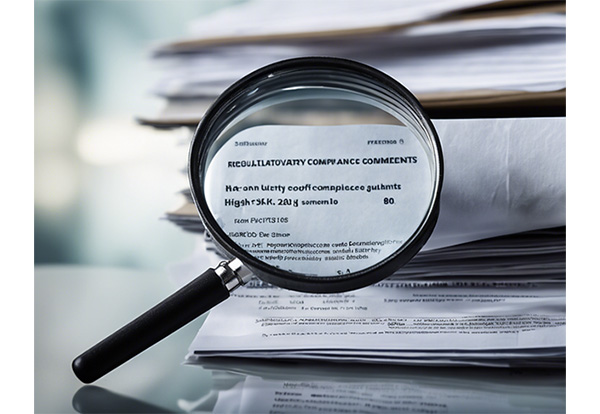Defense Industry Pain Points & Critical Thread Solutions – XD Innovation
The defense industry is facing some major shifts right now, with new technologies, evolving threats, and tighter regulations all hitting at once. As defense organizations tackle these challenges across the product lifecycle, pinpointing the key pain points and finding effective solutions is critical.
In my latest article, I’ve taken a different approach to my norm. Rather than diving in deep, I’m touching on the pains, thoughts and AI/Critical Thread Solutions across them all. Depending on which of these items becomes the most popular, I’ll then dive deep.
In the meantime, we’ll break down the biggest issues defense teams are up against and show how an AI-powered Critical Thread—a fully integrated digital solution spanning design, manufacturing, and quality—can be the game-changer you need to stay ahead.

1. Stringent Regulatory Requirements
Defense organizations have to navigate a complex maze of national and international regulations like ITAR, EAR, and GDPR. These govern everything from export controls to data protection and security protocols. Plus, the regulatory environment keeps changing, so staying compliant is a constant challenge.
Thoughts:
- Establish Dedicated Compliance Teams: Create specialized teams to keep an eye on regulatory changes and make sure all processes meet current standards.
- Integrate Compliance into Early Design Phases: Embed compliance checks right from the start to avoid costly redesigns later.
- Invest in Compliance Training: Regularly train employees on regulatory requirements to build a culture of compliance.
Critical Thread Solution:
The Critical Thread integrates compliance at every stage, ensuring traceability from requirements gathering through to production.
Requirements traceability tools connect product specs with regulatory needs, while robust change management ensures that any design modification is reflected across the entire lifecycle. Quality gates embedded in MES/MOM keep production aligned with regulatory standards, ensuring compliance at every step.
AI Overlay and Use-Cases:
- AI-Powered Compliance Monitoring: Use AI to track and analyze regulatory changes in real-time, automatically updating compliance requirements across the organization.
- Natural Language Processing (NLP): Employ NLP to parse through complex regulatory documents, extracting relevant requirements and integrating them into design and manufacturing processes.
- AI-Driven Traceability: Leverage AI to maintain end-to-end traceability of requirements, ensuring that every design and production decision aligns with compliance standards.

2. High Development Costs
Bringing in advanced technologies like AI, hypersonics, and stealth systems really drives up R&D costs. Add in the extensive prototyping and testing needed to meet tough defense standards, and the expenses climb even higher. On top of that, customizing solutions for specific clients or applications only adds more financial pressure to the mix.
Thoughts:
- Adopt Modular Design Approaches: Use modular systems to allow for scalability and easier updates, reducing long-term costs.
- Leverage Digital Engineering: Implement digital twins and simulation tools to minimize physical prototyping expenses.
- Collaborate with Partners: Engage in partnerships or consortiums to share development costs and resources.
Critical Thread Solution:
The Critical Thread optimizes development spending by fostering cross-functional collaboration on a single platform. Simulation for design and manufacturing, process planning through BOP, and supplier coordination via SCM Integration ensure that resources are used efficiently, cutting waste and accelerating time-to-market.
AI Overlay and Use-Cases:
- Generative Design with AI: Use AI algorithms to automatically generate multiple design options based on initial requirements and constraints, exploring more possibilities faster.
- AI-Driven Simulation: Implement AI to enhance simulation accuracy and speed, reducing the need for costly physical prototypes.
- Supplier Collaboration through AI: Utilize AI to identify potential parts, materials, and suppliers quickly, streamlining the procurement process.

3. Adaptation to Emerging Threats
The defense landscape is constantly evolving as adversaries push forward with new technologies. The rise of cyber warfare and autonomous threats means defense organizations need to act fast to counter them. With unpredictable global security shifts, defense solutions must be flexible and able to respond quickly.
Thoughts:
- Implement Agile Development Methodologies: Use agile practices to accelerate innovation and respond quickly to new threats.
- Invest in R&D for Emerging Technologies: Prioritize research in areas like cybersecurity, AI, and unmanned systems.
- Establish Continuous Threat Monitoring: Set up dedicated teams to assess and predict future threat landscapes.
Critical Thread Solution:
The Critical Thread’s agility allows organizations to respond swiftly to new threats. Design and Change Management capabilities ensure fast iteration, while Product Validation and Simulation tools test these changes virtually, reducing the time from design to deployment. MES/MOM keeps production on track, allowing teams to adapt manufacturing processes as needed.
AI Overlay and Use-Cases:
- AI-Driven Threat Analysis: Use AI to analyze vast amounts of data for identifying emerging threats, enabling proactive responses.
- Agile AI Development Platforms: Implement AI-enabled platforms that support rapid iteration and deployment of defense solutions.
- Predictive Analytics: Leverage AI to forecast potential future threats based on patterns and trends in global security data.

4. Supply Chain Vulnerabilities
Global supply chains are vulnerable to disruptions from events like pandemics, geopolitical tensions, and other unexpected challenges. Relying on single suppliers only adds to the risk, and the threat of counterfeit or low-quality components can seriously undermine system integrity.
Thoughts:
- Diversify the Supplier Base: Identify and qualify multiple suppliers for critical components.
- Enhance Supply Chain Visibility: Use advanced tracking systems to monitor the supply chain in real-time.
- Implement Rigorous Quality Controls: Establish strict inspection protocols to verify component authenticity and quality.
Critical Thread Solution:
The Critical Thread provides real-time visibility into the supply chain by connecting SCM, MRP, and MES/MOM systems. By integrating supplier data directly into the digital thread, organizations gain transparency into material flows, quality controls, and potential risks, allowing for proactive supply chain management.
AI Overlay and Use-Cases:
- AI for Supplier Risk Assessment: Use AI to evaluate supplier reliability and predict potential disruptions.
- Real-Time Supply Chain Monitoring: Implement AI-driven analytics for real-time tracking and anomaly detection in the supply chain.
- Counterfeit Detection: Leverage AI image recognition and data analysis to identify counterfeit or substandard components before they enter production.

5. Integration of Emerging Technologies
New technologies need to work seamlessly with legacy systems, but outdated infrastructure can make that tough. Handling huge amounts of data from sensors and connected devices also brings storage and analysis challenges.
Thoughts:
- Develop Open Architecture Systems: Design products with interoperability in mind to facilitate future integrations.
- Modernize IT Infrastructure: Invest in scalable and flexible IT solutions to support new technologies.
- Adopt Advanced Data Analytics: Utilize big data tools to manage and derive insights from collected data.
Critical Thread Solution:
The Critical Thread supports the seamless integration of new technologies, from concept through production. It connects Requirements Traceability and Process Planning with MES/MOM, ensuring that legacy systems can work alongside emerging technologies without disrupting operations.
AI Overlay and Use-Cases:
- AI-Powered Integration Tools: Use AI to automate the integration of new technologies with existing systems.
- Data Management with AI: Implement AI solutions for efficient storage, retrieval, and analysis of massive data sets.
- AI for Technical Debt Reduction: Leverage AI to identify and address areas of technical debt, streamlining the adoption of new technologies.

6. Talent Acquisition and Retention
There’s a high demand for experts in AI, cybersecurity, and advanced engineering, but the commercial sector often lures them away with big offers. Plus, an aging workforce means losing experienced personnel and critical knowledge.
Thoughts:
- Enhance Recruitment Strategies: Offer competitive benefits and highlight opportunities for impactful work.
- Invest in Employee Development: Provide continuous learning and career advancement programs.
- Collaborate with Educational Institutions: Partner with universities to develop talent pipelines through internships and cooperative programs.
Critical Thread Solution:
The Critical Thread empowers teams with the best tools, from AI-driven design to immersive AR/VR training systems. This fosters a culture of innovation, helps attract top talent, and keeps employees engaged through access to cutting-edge technologies.
AI Overlay and Use-Cases:
- AI for Talent Identification: Use AI to identify and recruit talent with the specific skills needed.
- Personalized AI Training Programs: Implement AI-driven learning platforms that adapt to individual employee needs, enhancing skill development.
- AR/VR Training with AI: Combine AI with AR/VR technologies to create immersive training experiences that improve performance and engagement.

7. Cybersecurity Threats
As systems become more connected, the attack surface for cyber threats expands. Adversaries are using advanced methods to breach defense systems, and there’s increasing pressure to comply with data protection regulations.
Thoughts:
- Implement Robust Cybersecurity Protocols: Adopt comprehensive security measures across all systems.
- Conduct Regular Security Audits: Periodically assess systems for vulnerabilities and address them promptly.
- Promote Cybersecurity Awareness: Train employees on best practices to prevent breaches due to human error.
Critical Thread Solution:
Cybersecurity is integrated into the Critical Thread at every level, ensuring that every stage of the product lifecycle is secure. AI-driven monitoring tools provide continuous threat detection, while MES/MOM protects manufacturing operations from cyber risks.
AI Overlay and Use-Cases:
- AI-Powered Threat Detection: Use AI to monitor systems continuously and detect anomalies that may indicate cyber attacks.
- Predictive Cybersecurity Analytics: Implement AI to predict potential security breaches before they happen.
- Automated Response Systems: Leverage AI to automatically respond to detected threats, minimizing damage and downtime.

8. Cost Overruns and Schedule Delays
Complex project requirements and changing scopes can lead to cost overruns and delays. Limited resources and inefficient project management only make things worse.
Thoughts:
- Adopt Advanced Project Management Tools: Utilize software for better planning, scheduling, and resource allocation.
- Enhance Communication Channels: Ensure all stakeholders are informed and aligned on project goals and changes.
- Implement Risk Management Practices: Identify potential risks early and develop mitigation strategies.
Critical Thread Solution:
The Critical Thread enhances visibility across the entire project lifecycle, allowing teams to track progress and spot potential issues before they escalate. MES/MOM systems provide real-time data, helping to reduce delays by keeping production and design tightly aligned.
AI Overlay and Use-Cases:
- AI for Project Scheduling: Use AI to optimize project timelines, resource allocation, and identify potential bottlenecks.
- Predictive Risk Management: Implement AI to predict risks and suggest mitigation strategies before issues arise.
- AI-Driven Communication Tools: Leverage AI to facilitate clear and efficient communication among teams and stakeholders.

9. Sustainability and Environmental Regulations
Defense production can have a significant environmental impact. Meeting environmental laws adds complexity, and there’s growing pressure from governments and the public for sustainable practices.
Thoughts:
- Incorporate Sustainable Materials and Processes: Use eco-friendly materials and energy-efficient manufacturing methods.
- Achieve Environmental Certifications: Pursue standards like ISO 14001 to demonstrate commitment to environmental management.
- Engage in Corporate Social Responsibility (CSR): Develop CSR initiatives that promote sustainability and community engagement.
Critical Thread Solution:
Sustainability is woven into the Critical Thread from the design phase through production. Sustainable materials are incorporated into the BOM, while MES/MOM systems monitor energy consumption and waste reduction efforts, ensuring that environmental goals are met.
AI Overlay and Use-Cases:
- AI for Eco-Design: Use AI to design products that are environmentally friendly without sacrificing performance.
- Energy Consumption Optimization: Implement AI to monitor and reduce energy usage in manufacturing processes.
- Waste Reduction with AI: Leverage AI to identify areas where waste can be minimized in production and supply chain operations.

10. Budget Constraints
Fluctuating defense budgets and high operational costs make it tough to justify expenditures. Demonstrating clear value and effectiveness is essential to secure funding.
Thoughts:
- Optimize Resource Allocation: Prioritize projects with the highest strategic value.
- Improve Operational Efficiency: Streamline processes to reduce waste and lower costs.
- Engage in Long-Term Planning: Develop financial strategies that account for budget fluctuations and future needs.
Critical Thread Solution:
The Critical Thread provides real-time insights into resource utilization, ensuring that investments are optimized. MRP and MES/MOM systems are fully integrated, allowing organizations to manage materials, labor, and costs efficiently.
AI Overlay and Use-Cases:
- AI for Financial Forecasting: Use AI to provide accurate cost and revenue forecasts, aiding in budgeting and financial planning.
- Operational Efficiency Analytics: Implement AI to analyze operations and identify areas for cost reduction and efficiency gains.
- AI-Driven Decision Support: Leverage AI to assess the potential ROI of projects, helping prioritize investments.
Conclusion
The defense industry’s challenges are multifaceted and evolving. Addressing these pain points requires a holistic approach that combines technological innovation with strategic foresight. The AI-powered Critical Thread offers a transformative solution, seamlessly integrating design, manufacturing, and quality processes into a unified digital ecosystem.
By harnessing the power of AI and fostering a culture of collaboration, agility, and responsibility, defense organizations can navigate regulatory complexities, reduce development costs, adapt to emerging threats, and enhance overall efficiency. Embracing these solutions not only tackles current challenges but also positions organizations to thrive in the dynamic landscape of defense innovation.
As the industry continues to evolve, those who integrate advanced technologies and agile methodologies into their core operations will lead the way, ensuring security, sustainability, and success in the face of ever-changing demands.
Of course, I/we’d be delighted to discuss any of the above in more detail and show you how we make Defense Manufacturing Smarter, Faster and more Profitable.






